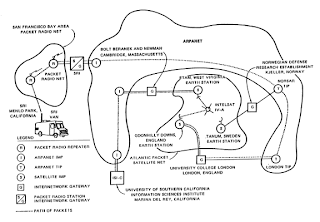The number of networks exceeds 7,500 and the number of computers connected passes 1,000,000. The MBONE for the first time carries audio and video. The challenge to the telephone network’s dominance as the basis for communicating between people is seen for the first time; the Internet is no longer just for machines to talk to each other.
During the summer, students at NCSA in University of Illinois at Urbana-Champaign modify Tim Berners-Lee’s hypertext proposal. In a few weeks MOSAIC is born within the campus. Larry Smarr shows it to Jim Clark, who founds Netscape as a result.
The WWW bursts into the world and the growth of the Internet explodes like a supernova. What had been doubling each year, now doubles in three months. What began as an ARPA experiment has, in the span of just 30 years, become a part of the world’s popular culture.
This timeline was initially created for the Supercomputing 97 Conference as a forty-foot long by ten-foot high wall. This wall embedded actual physical artifacts relating to the timeline and was produced with support from ACM/IEEE CS SC97.
Credits:
Web Layout and Design: Dan Lythcott-Haims
Poster Layout and Design: Dan Lythcott-Haims
Historical Research: Dag Spicer, Gwen Bell (Computer History Museum), Jan Zimmerman, Jacqueline Boas, Bill Boas (AbbaTech).








































